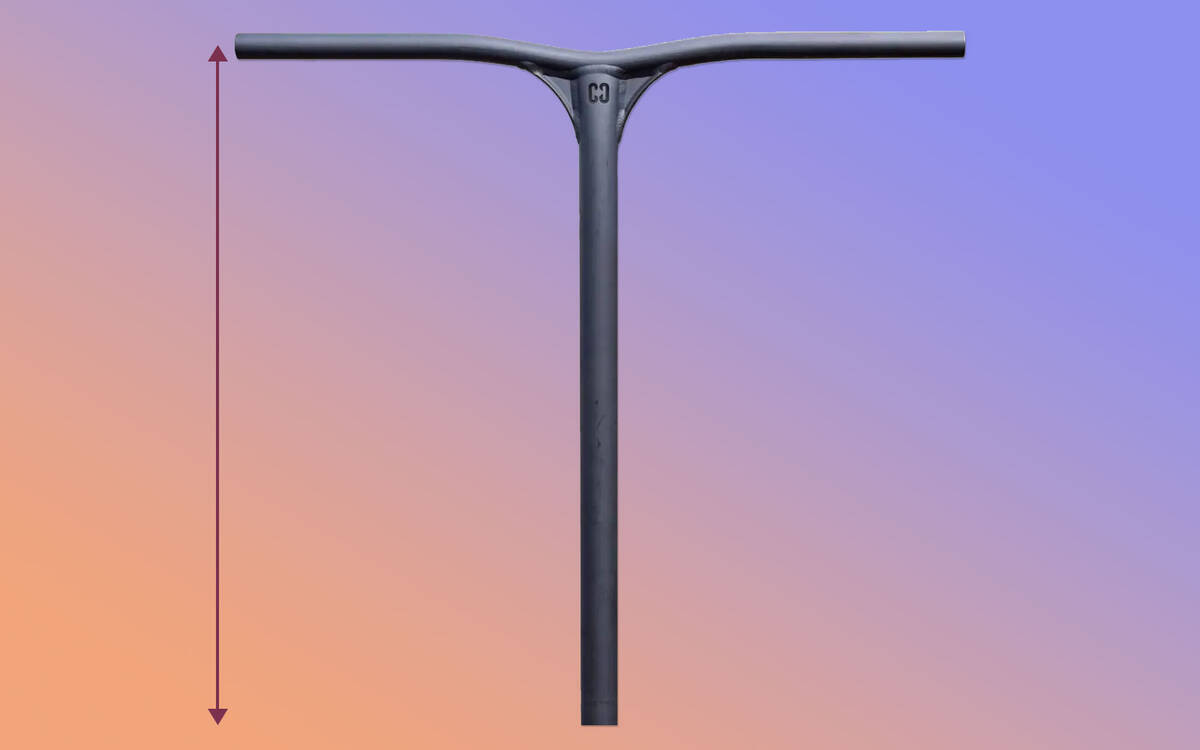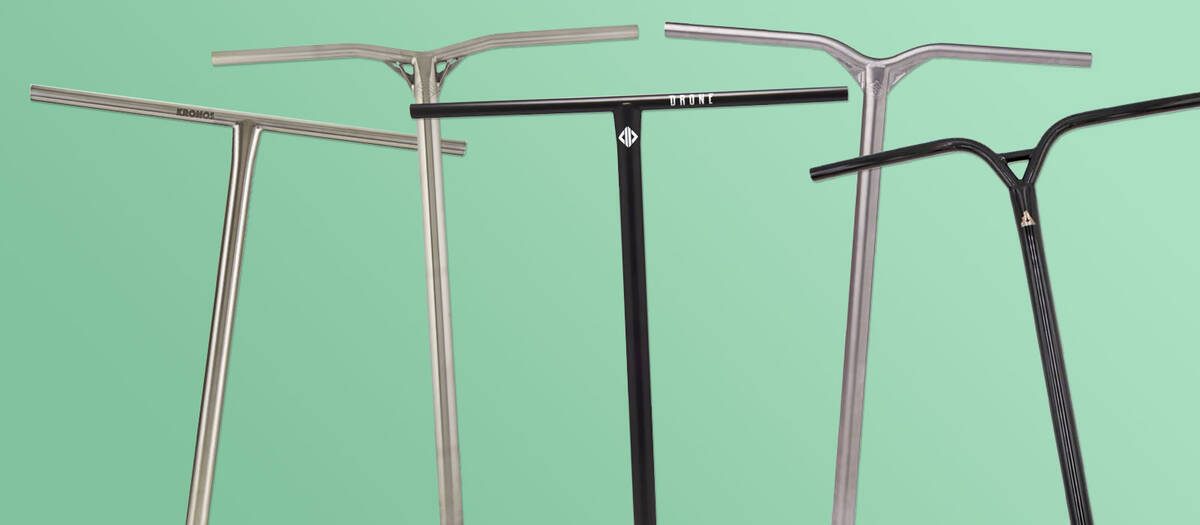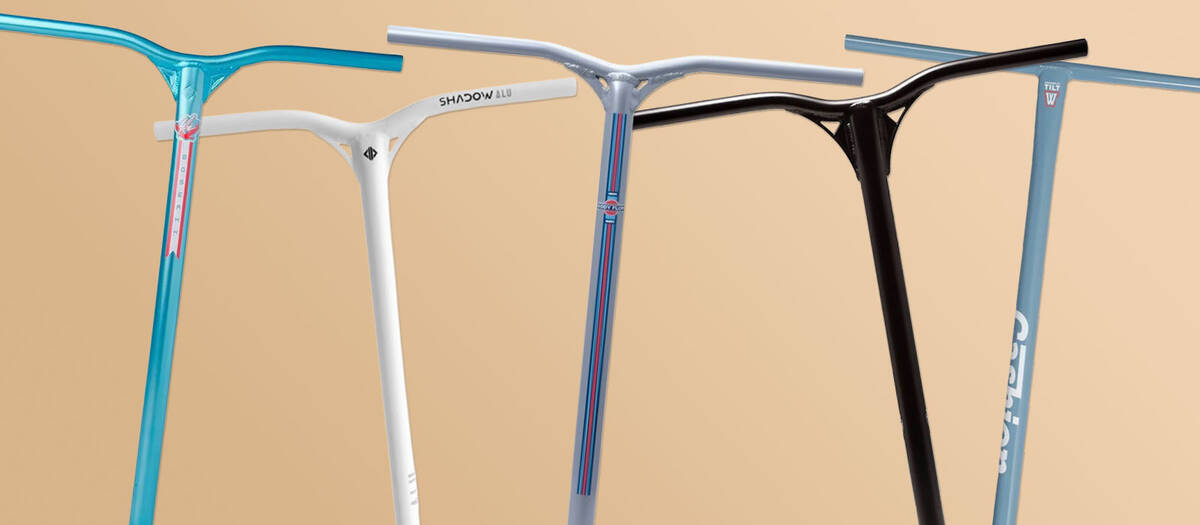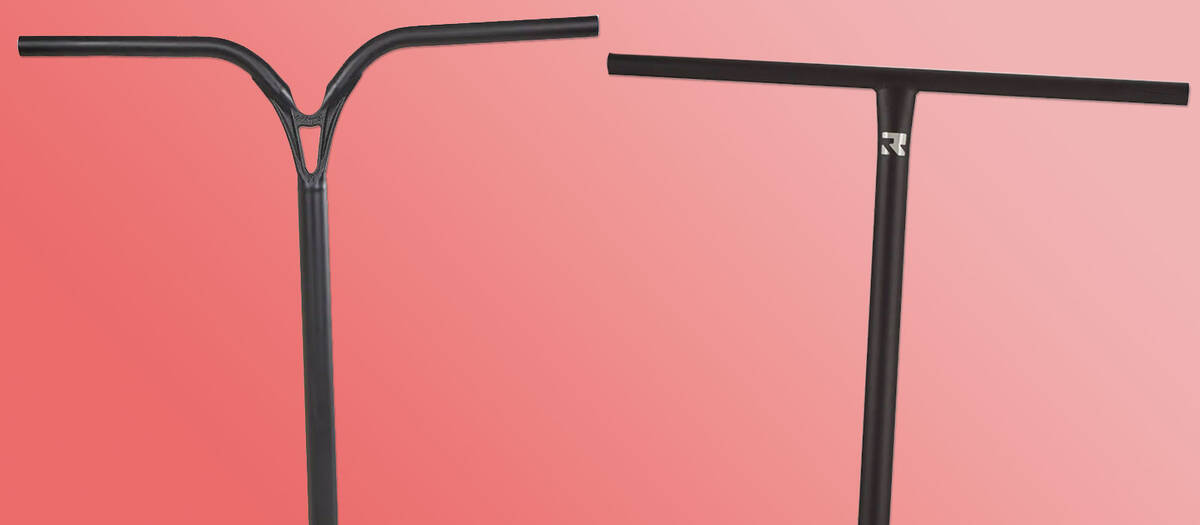Stunt Scooter Bars Purchase Guide
Greetings! You have arrived at our detailed guide for purchasing stunt scooter bars. We aim to aid you in exploring the multitude of options, thus simplifying the process of selecting the ideal scooter bar.
We shall address any queries you may have before obtaining a new stunt scooter bar. Central aspects such as bar height, compatibility, and material will be discussed. Prepare yourself to enhance your scooter with the finest bar available!
Overview
Overview
Determining the Appropriate Height for Your Scooter Bar

Height plays a crucial role in choosing the suitable stunt scooter bar. It significantly affects your riding comfort and style, necessitating careful consideration when deciding on the bar's height.
The height is largely a matter of personal preference. For newcomers without developed preferences, there are guidelines that simplify selecting the right height.
How tall should the bars be? Ideally, stunt scooter bars should reach between your hips and navel when standing with the scooter deck between your feet. This ensures comfort and optimal leverage for tricks. With the bars at this height, a straight back is possible while maintaining ample leverage. Newcomers torn between two heights within the recommended range should consider the taller option for generally better control.
If unsure about sizing up or down while acquiring new bars, or uncertain about choosing a taller or shorter bar version, the following table might assist you.
| Aspect | Taller Bars | Shorter Bars |
|---|---|---|
| Comfort | Minimises back strain by allowing a more upright posture | Encourages forward bending, potentially increasing back strain |
| Tricks | Provides greater control for performing grinds and manuals | Facilitates control during aerial manoeuvres |
| Stability | Offers more stability | Enhances agility and responsiveness |
| Style | Typically used for street riding | Typically used for park riding |
Measuring the Height of Your Scooter Bar
Product specifications usually list scooter bar height. However, this detail alone doesn't clarify the total height once the bar is mounted.
To exactly determine your scooter's overall height with the new bar, measure from the bottom of the front wheel to where the bottom of the scooter bar will sit upon mounting. This relies on your scooter's compression system.
How to ascertain the entire scooter height:
- SCS: Measure from the bottom of the front wheel to the midpoint of the clamp. Add this to the bar height for the complete scooter height.
- HIC/IHC/ICS: Measure from the bottom of the front wheel to the clamp's bottom. Add this to the bar height for the overall scooter height after attaching the new bar.
For further information, feel free to contact us. Here are some helpful links:
Selecting the Optimal Scooter Bar Width

Your scooter bar's width should complement your shoulder width. Measure shoulder to shoulder and add a couple of inches. This helps avoid discomfort from bars too narrow or too wide, impacting your wrist and shoulder comfort or trick performance.
For deciding between narrower or wider bars, consider these elements:
- Wider bars: Enhances stability and ease of catching
- Narrower bars: Improves agility and ease of spinning
Differences Between Standard and Oversized Scooter Bar Diameters

The diameter of scooter bars is classified as either standard or oversized:
- Standard: 32 mm external diameter / 28 mm internal diameter
- Mix: 35 mm outer diameter / 28 mm inner diameter (applies to many aluminium bars)
- Oversized: 35 mm external diameter / 32 mm internal diameter
The principal distinction between standard and oversized bars is in their weight and strength. Oversized bars are typically more robust and heavier, whereas standard bars are lighter and less durable.
Aluminium bars are unique in needing additional material for sufficient strength, generally boasting a 35 mm outer diameter with a standard 28 mm inner diameter.
Scooter Bar Compatibility
Ensuring compatibility with existing components is crucial when choosing a new scooter bar. Review its specifications to see which compression system it supports.
- With an SCS setup, ensure there is no slit in the bar - an SCS adapter can address this.
- For a standard size SCS clamp, a standard outer diameter bar is necessary.
- With an oversized SCS clamp and a desire for a standard bar, ensure an SCS clamp shim is in place.
Refer to the table below to ascertain a bar's requirements for compatibility with SCS, HIC, or IHC systems. Review from left to right to determine whether your current system is compatible with a particular bar size and see if additional requirements exist, such as whether a slit is necessary.
Standard Bars32 mm outer diameter 28 mm inner diameter |
Oversized Bars35 mm outer diameter 32 mm inner diameter |
MIX (Most Aluminium Bars)35 mm outer diameter 28 mm inner diameter |
|
|---|---|---|---|
| SCS Compression
|
Compatible if:
|
Compatible if:
|
Compatible if:
|
| HIC Compression
|
NOT COMPATIBLE |
Compatible if:
|
NOT COMPATIBLE |
| IHC Compression
|
Compatible if:
|
NOT COMPATIBLE |
Compatible if:
|
Should your SCS setup tempt you towards a slit-bottomed bar, an SCS Sleeve (also called an SCS Bar Adapter) in our Scooter Compression section could be of use. Many HIC or IHC bars come with an SCS adapter. Discover them here:
We provide several guides covering stunt scooter compression and compatibility questions. Resolve your uncertainties with these guides:
Features of Titanium Scooter Bars

Titanium bars rival aluminium in lightness and steel in strength, garnering favour among seasoned riders. Their exceptional strength-to-weight ratio is a compelling reason to choose titanium for your scooter. You can rely on their durability during intense sessions, and their lightness won’t impede your performance.
Material costs and production challenges contribute to titanium's higher expense, as crafting titanium bars demands substantial resources. Consequently, their price is usually higher.
Riders initially unfamiliar with titanium bars may notice their flex, which, while requiring acclimatisation, can become beneficial to one's riding technique. As one adjusts to the flex, it helps absorb some impact transmitted through the bar during hard landings.
A significant contrast between titanium and other materials is how titanium bars tend to snap instead of gradually bending when they give way after extensive use. If signs of wear appear (typically after years of use), replacing them is recommended.
Pros:
- Strong
- Light
- Flexible
Cons:
- Expensive
- Flexibility (disliked by some)
- May snap when they finally fail.
Filter our bar selection by material to view our titanium offerings:
Advantages and Drawbacks of Aluminium Scooter Bars

Aluminium bars for stunt scooters are lauded for their lightweight build, appealing to those who value nimbleness and control. Their lightness supports complicated aerial tricks. Additionally, aluminium bars are often budget-friendly.
The main drawback is aluminium's lower strength than steel or titanium, leading to greater susceptibility to damage. To combat this, aluminium bars often incorporate stabilisers like gussets or wedges at welded points to boost durability.
Pros:
- Lightweight
- Economical
Cons:
- Less robust
- Lacks flexibility
To explore our aluminium bar selection, use the material filter in the category:
Chromoly Scooter Bars Overview

Steel stunt scooter bars, or chromoly bars, are well-regarded for their impressive durability and cost-effectiveness. They do tend to be heavier than bars constructed from alternative materials.
Unlike aluminium bars, which often feature gussets or Y-shapes to enhance strength, chromoly bars can be produced in authentic T-shapes due to the material’s inherent robustness.
Steel bars are frequently used in street setups, even by professional stunt scooter riders. Not all riders emphasise ultra-lightweight setups, so whether you are a novice or a seasoned pro, chromoly stunt scooter bars are a trustworthy option to consider!
To mitigate some excess weight, some chromoly scooter bars use butted tubing. This involves specific sections of the bars having thinner tubing to lessen overall weight while preserving strength. Chromoly bars are ideal for beginners, and there is a chromoly bar available that suits every compression system.
Pros:
- Durable
- Strong
- Affordable
- T-shape
Cons:
- Heavy
Visit our range of scooter bars and filter by material to view all our chromoly stunt scooter bars:
Choosing Between Y-Bars and T-Bars for Stunt Scooters

T-bars and Y-bars are named for their unique shapes. The choice between them largely depends on personal preference, as neither is fundamentally better than the other.
T-bars are generally considered slightly less strong because they do not include gussets or braces to strengthen the join between the handlebars and the down tube. Consequently, T-shaped bars are often made from steel or titanium.
In contrast, Y-bars incorporate reinforcements that render them somewhat sturdier. As a result, aluminium bars are frequently fashioned in a Y-shape.
The choice between T-bars and Y-bars is often driven by factors such as aesthetics, how they feel in use, and a rider's alignment with a particular style or identity. Both types offer unique advantages and cater to different rider preferences.
Backsweep & Upsweep
Backsweep describes the angle of the handlebar towards the rider, while upsweep refers to the upward angle of the bar. These features considerably affect the ergonomics of scooters, fostering a more relaxed and natural wrist position.
Generally, backsweep and upsweep are characteristics of Y-shaped bars, in contrast to T-shaped stunt scooter bars, which favour simplicity and a straightforward design.
Explore all our exciting Y- and T-shaped bars:
